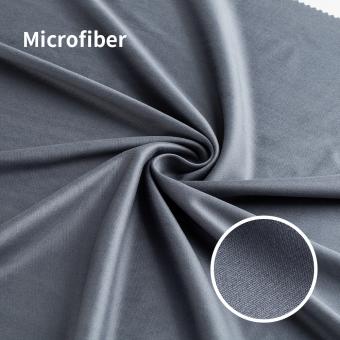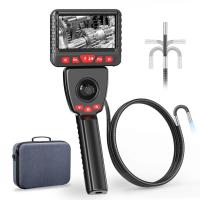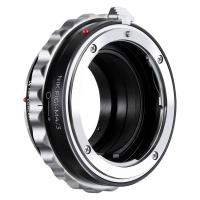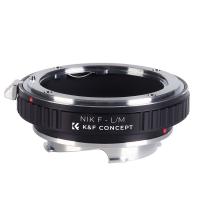Scanning Electron Microscope How It Works ?
A scanning electron microscope (SEM) works by using a focused beam of electrons to scan the surface of a sample. The electron beam is generated by an electron gun and accelerated towards the sample using electromagnetic lenses. As the beam interacts with the sample, various signals are produced.
One of the main signals is the secondary electrons that are emitted from the sample's surface due to the interaction with the primary electron beam. These secondary electrons are collected by a detector and used to create an image of the sample's surface. The image is formed by scanning the electron beam across the sample in a raster pattern and measuring the intensity of the secondary electrons at each point.
In addition to secondary electrons, other signals such as backscattered electrons and characteristic X-rays can also be detected and used to provide additional information about the sample's composition and structure. The SEM allows for high-resolution imaging of the sample's surface, providing detailed information about its topography and morphology.
1、 Electron Beam Generation
A scanning electron microscope (SEM) is a powerful tool used to observe the surface of materials at a high resolution. It works by using an electron beam to scan the sample, and the interaction between the beam and the sample provides information about its surface topography, composition, and other properties.
The first step in the operation of an SEM is the generation of the electron beam. This is achieved by using a heated filament to emit electrons, which are then accelerated towards the sample using a high voltage. The electron beam is focused using electromagnetic lenses, which ensure that the beam is narrow and well-defined.
Once the electron beam is generated, it is scanned across the sample in a raster pattern. As the beam interacts with the sample, various signals are generated. The most commonly used signal is the secondary electron signal, which is emitted when the primary electron beam strikes the sample surface. This signal provides information about the sample's topography and is used to create the final image.
Other signals that can be detected include backscattered electrons, which provide information about the sample's composition, and characteristic X-rays, which can be used for elemental analysis. These signals are collected using detectors positioned above the sample.
In recent years, advancements in SEM technology have led to improved resolution and imaging capabilities. For example, the introduction of field emission electron sources has allowed for higher beam currents and improved spatial resolution. Additionally, the development of environmental SEMs has enabled the observation of samples in their natural state, such as biological specimens in a wet environment.
Overall, the scanning electron microscope is a versatile tool that has revolutionized the field of materials science and nanotechnology. Its ability to provide high-resolution imaging and detailed surface analysis has made it an indispensable tool in various scientific and industrial applications.

2、 Sample Preparation
Sample preparation is a crucial step in the operation of a scanning electron microscope (SEM). It involves the careful and meticulous preparation of the sample to ensure optimal imaging and analysis. The primary goal of sample preparation is to create a specimen that is both conductive and stable under the high vacuum conditions of the SEM.
The first step in sample preparation is fixing the sample onto a suitable substrate. This can be done using adhesives, mounting resins, or by simply placing the sample on a conductive tape. The choice of substrate depends on the nature of the sample and the analysis requirements.
Once the sample is fixed, it needs to be dehydrated to remove any moisture. This is typically done by subjecting the sample to a series of alcohol washes followed by critical point drying or freeze-drying. Dehydration is essential to prevent the formation of water vapor in the vacuum chamber, which can interfere with imaging.
After dehydration, the sample is coated with a thin layer of conductive material, such as gold or carbon. This coating is necessary to prevent charging of the sample during imaging. Charging occurs when the electrons from the SEM beam accumulate on the sample surface, leading to distorted images. The conductive coating provides a path for the excess electrons to dissipate, ensuring accurate imaging.
In recent years, there have been advancements in sample preparation techniques to improve imaging resolution and reduce artifacts. For example, cryo-fixation techniques have been developed to preserve samples in their native state, allowing for high-resolution imaging of biological specimens. Additionally, focused ion beam (FIB) milling has become a popular method for preparing cross-sectional samples, enabling three-dimensional analysis of materials.
In conclusion, sample preparation is a critical aspect of SEM operation. It involves fixing, dehydrating, and coating the sample to ensure optimal imaging and analysis. Advancements in sample preparation techniques continue to enhance the capabilities of SEMs, allowing for high-resolution imaging of a wide range of materials.

3、 Electron-Beam Specimen Interaction
The scanning electron microscope (SEM) is a powerful tool used in various scientific fields to obtain high-resolution images of a sample's surface. It works by utilizing the interaction between an electron beam and the specimen.
In an SEM, a beam of electrons is generated by an electron gun and accelerated towards the specimen using electromagnetic lenses. The electron beam is focused onto a small spot on the sample's surface, typically a few nanometers in diameter. As the beam interacts with the specimen, several important processes occur.
Firstly, the primary electrons in the beam collide with atoms in the sample, causing the ejection of secondary electrons. These secondary electrons carry information about the topography and composition of the surface. They are collected by a detector and used to generate an image of the sample.
Additionally, the primary electrons can also undergo inelastic scattering, resulting in the emission of characteristic X-rays. These X-rays carry elemental information about the sample and can be detected to perform elemental analysis.
Furthermore, the interaction of the electron beam with the sample can cause the emission of backscattered electrons. These electrons have higher energy and are sensitive to the atomic number of the elements present in the sample. By detecting and analyzing the backscattered electrons, information about the sample's composition can be obtained.
Recent advancements in SEM technology have focused on improving resolution, speed, and sensitivity. For example, the introduction of field emission guns (FEG) has allowed for higher beam currents and improved spatial resolution. Additionally, the development of energy-dispersive X-ray spectroscopy (EDS) detectors has enhanced the elemental analysis capabilities of SEMs.
In conclusion, the scanning electron microscope works by utilizing the interaction between an electron beam and a specimen. Through processes such as secondary electron emission, inelastic scattering, and backscattered electron detection, SEMs provide high-resolution images and elemental analysis of a sample's surface. Ongoing advancements in SEM technology continue to push the boundaries of imaging and analysis capabilities.

4、 Signal Detection and Amplification
The scanning electron microscope (SEM) is a powerful tool used in various scientific fields to obtain high-resolution images of samples. It works by using a focused beam of electrons to scan the surface of a sample and collect information about its topography and composition.
The SEM operates by first generating a beam of electrons using a heated filament. These electrons are then accelerated towards the sample using an electric field. As the electrons interact with the sample, various signals are generated, including secondary electrons, backscattered electrons, and characteristic X-rays.
The secondary electrons are the most commonly used signal in SEM imaging. They are low-energy electrons that are emitted from the surface of the sample when it is bombarded by the primary electron beam. These secondary electrons carry information about the topography of the sample's surface. By scanning the primary beam across the sample and detecting the secondary electrons, a detailed image of the sample's surface can be obtained.
To detect and amplify these signals, the SEM uses a series of detectors and amplifiers. The secondary electrons are typically collected by a scintillator, which converts the electrons into photons. These photons are then detected by a photomultiplier tube or a solid-state detector, which converts them into an electrical signal. This signal is then amplified and processed to generate an image.
In recent years, advancements in SEM technology have led to improvements in signal detection and amplification. For example, the development of solid-state detectors has allowed for faster and more sensitive detection of signals. Additionally, the use of advanced signal processing algorithms has improved the quality and resolution of SEM images.
Overall, the scanning electron microscope works by using a focused electron beam to scan the surface of a sample and collecting signals generated by the interaction between the beam and the sample. These signals are then detected, amplified, and processed to generate high-resolution images. Ongoing advancements in signal detection and amplification continue to enhance the capabilities of SEMs and expand their applications in various scientific fields.































